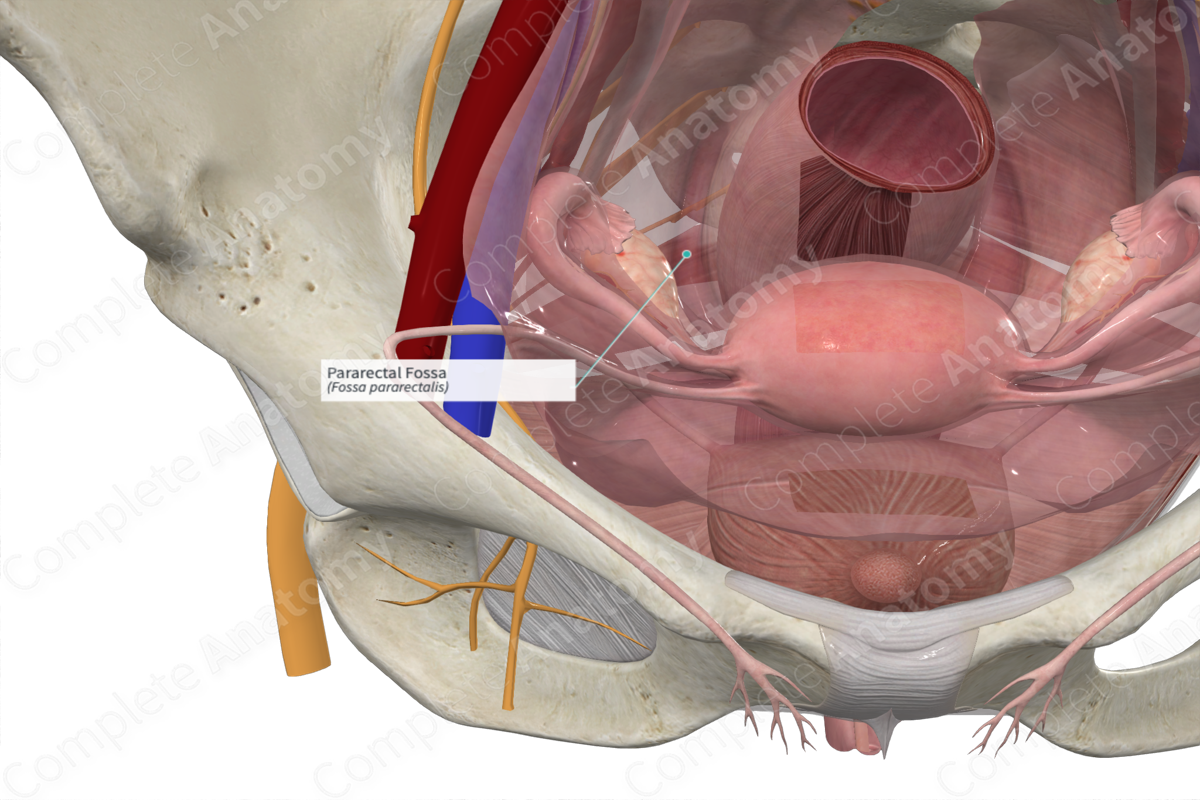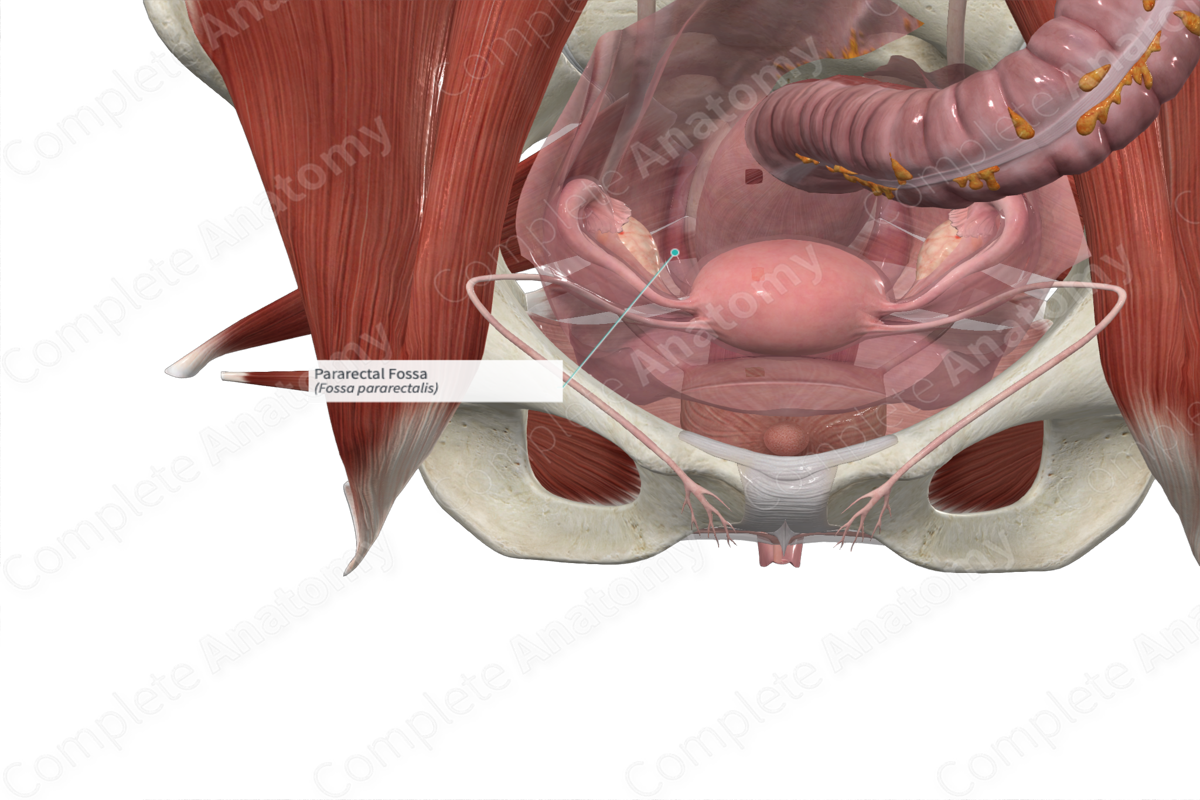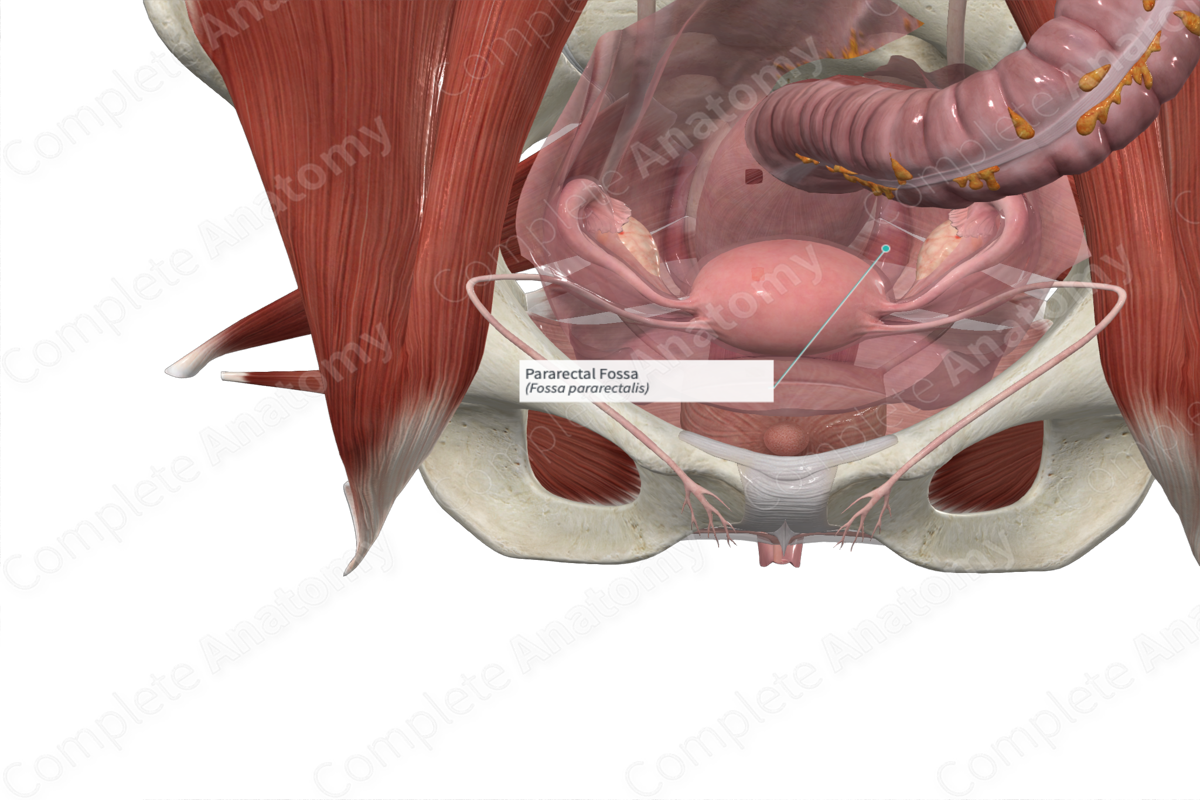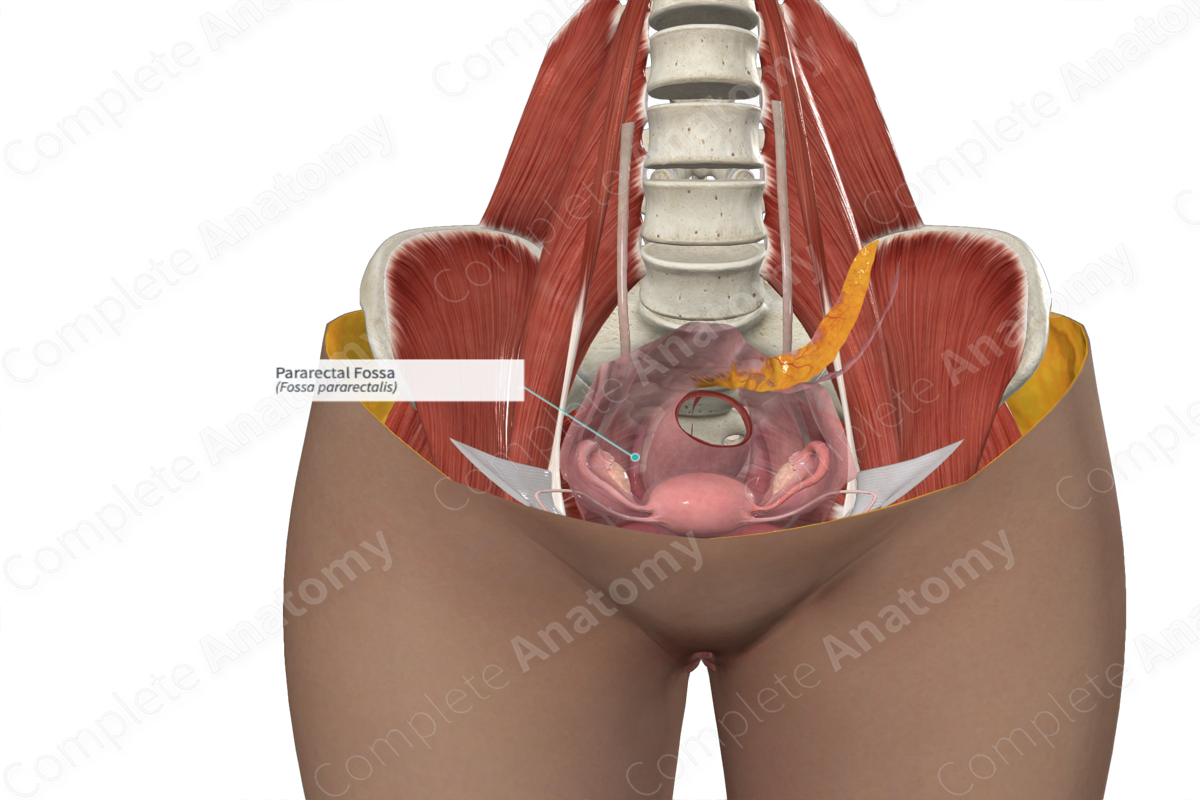
Pararectal Fossa Structure
The peritoneum is a complex, continuous serous membrane consisting of a layer of mesothelium and varying degrees of connective and adipose tissue. Visually, it is largely unremarkable, smooth, and has a lubricated surface due to the presence of peritoneal fluid.
Pararectal Fossa Anatomical Relations
The pararectal fossae are a result of the peritoneal reflections off the anterolateral sides of the rectum. The lateral limit of the pararectal fossae is the sacrogenital fold in males and uterosacral fold in females. Posteriorly, the pararectal fossae are limited by the sacrum and separated anteriorly from the paravesical fossae, laterally by the ureter and, in females, the broad ligament.
Pararectal Fossa Function
The pararectal fossae are depressions of peritoneum that offer space for the rectum to expand into as it fills. Usually the pararectal fossae are deeper in females than males (Standring, 2016).
Pararectal Fossa List of Clinical Correlates
- Ascites
- Adhesions
Pararectal Fossa References
Standring, S. (2016) Gray's Anatomy: The Anatomical Basis of Clinical Practice. Gray's Anatomy Series 41 edn.: Elsevier Limited.



